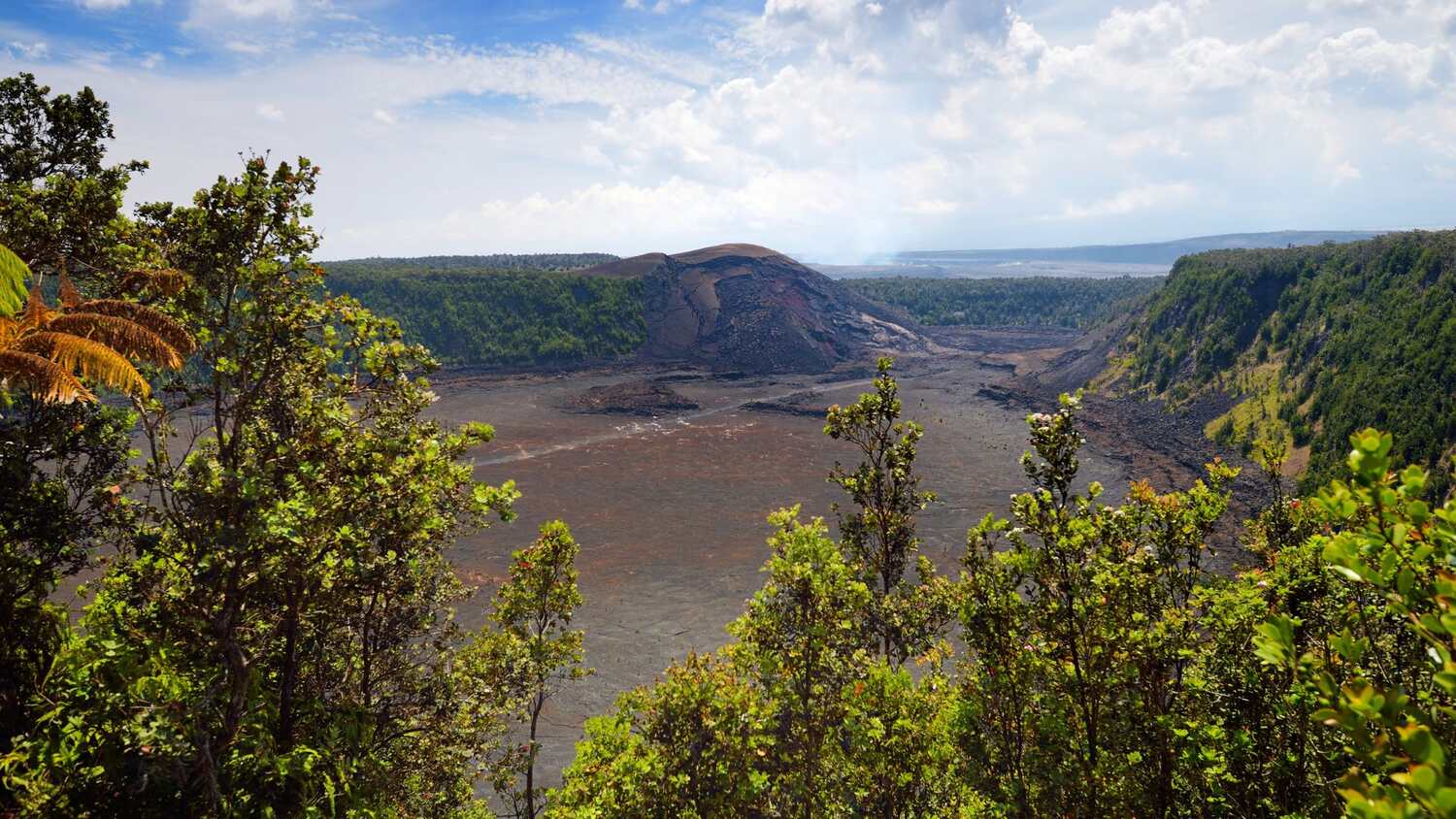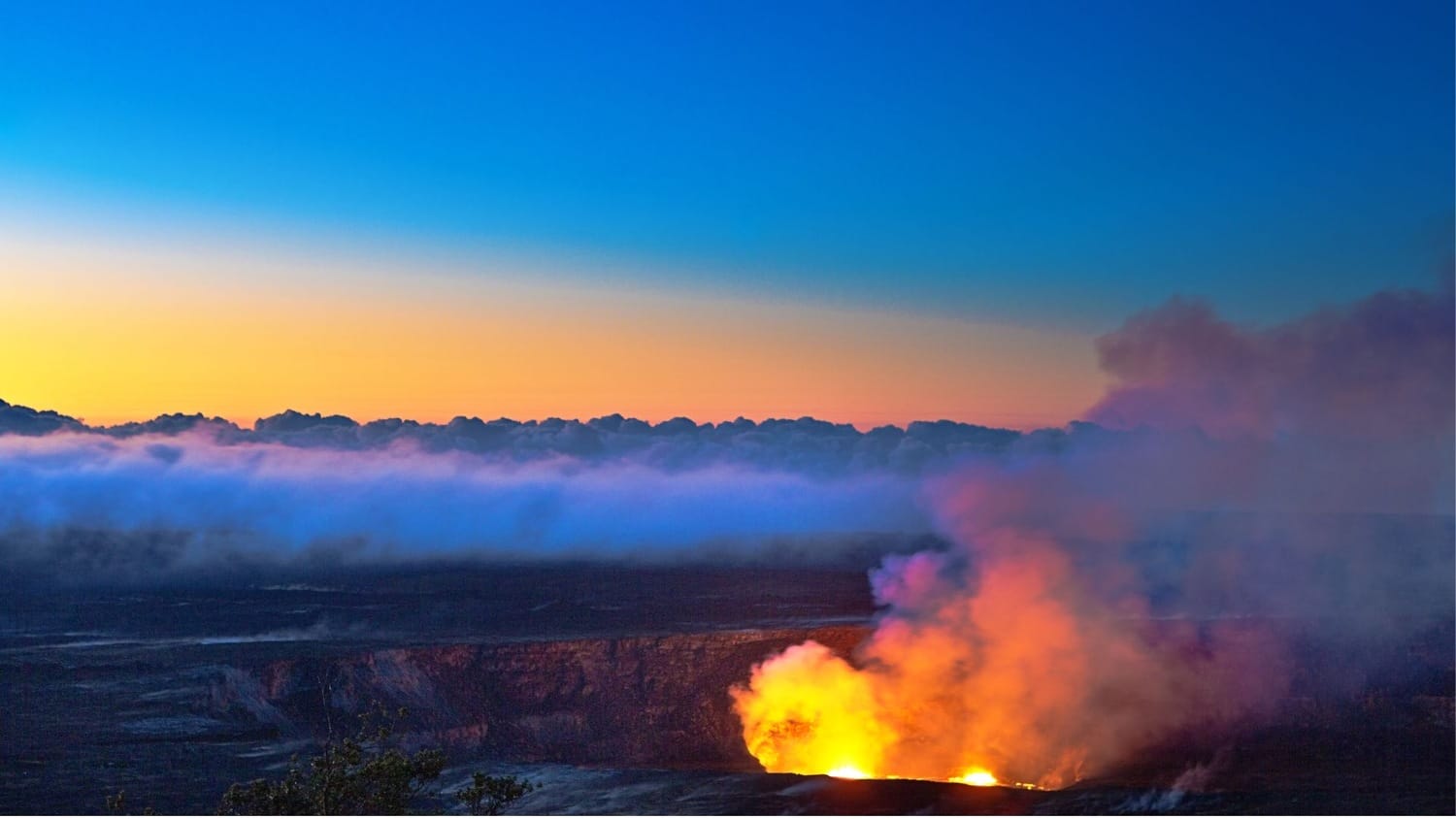Camping at Volcanoes National Park: Ultimate Guide


Aloha! | E Komo Mai
Camping in Volcanoes National Park offers a truly unforgettable experience. As you plan your trip with this ultimate guide, the first step is deciding where to stay. You’ll need to think about whether you prefer a developed campground with amenities or a more rustic, backcountry adventure.

Choosing Your Campsite for Camping at Volcanoes National Park
Volcanoes National Park has two established campgrounds. Namakanipaio Campground sits at a cool and misty 4,000 feet elevation in a eucalyptus forest. It offers both campsites and cabins for rent.
Namakanipaio Campground is conveniently located near the Volcano House Hotel, where you can enjoy amenities like restrooms, running water, picnic tables, and barbecue pits. Kulanaokuaiki, on the other hand, is a more rustic option at 2,700 feet. This campground provides basic facilities like picnic tables and toilets, but you’ll need to bring your own water.
For those seeking solitude, backcountry camping is an incredible option, with permits available online or at the visitor center. Permits are only $10 and allow you to immerse yourself in the park’s raw beauty.

Understanding the Lay of the Land
Volcanoes National Park is incredibly diverse. Spanning from sea level to the summit of 13,679-foot Mauna Loa, this national park is home to the world’s largest active volcano, according to the National Park Service.
One of the most compelling reasons to visit the Big Island is the volcanic activity. Imagine hiking through lush rainforests, exploring rugged coastlines, and marveling at otherworldly lava fields – all in one place. This park has it all, making it important to be prepared for every possible climate.
It can get cold at those higher elevations, so packing layers is key. Weather in Volcanoes National Park is highly variable, so it’s recommended to bring clothing that can be layered for different conditions.

Planning Your Itinerary
While parts of the park were impacted by eruptions back in 2018, causing closures and renovations, there are still countless incredible places to see. Most of the park reopened to the public in September of 2018, and there are excellent hiking trails at Volcanoes National Park.
Thankfully, some of the most iconic destinations like Nahuku (Thurston Lava Tube), have reopened. However, you’ll want to be aware that a few areas are still closed.
This includes the overlook at the Holei Sea Arch, as well as parts of Crater Rim Drive, and the scenic 1.2-mile Iliahi Trail rainforest loop hike. Jaggar Museum , unfortunately, is now permanently closed due to significant damage caused by a crater collapse. So, while the volcanoes are unpredictable, you can still expect to be blown away by the raw beauty and power of nature on display.
| Must-See Spot | Description | Tips |
| Kilauea Iki Trail | A moderately challenging 4-mile loop showcasing diverse landscapes from a lush forest to a massive crater. | Go early for cooler temperatures and to potentially avoid crowds. |
| Devastation Trail | An easier paved 1-mile stroll providing views of a stark landscape shaped by volcanic activity. | A good option for those short on time or seeking a less strenuous hike. |
| Maunaiki Trail | A challenging backcountry trail traversing the Kau Desert and offering panoramic park views. | Only for experienced hikers, come prepared with ample water and sun protection due to limited shade. |

Getting Around Volcanoes National Park
Having a car is convenient. However, consider experiencing some of the park’s wonders by bike. You can rent a bike from outfits like Big Island Bike Tours and explore at your own pace, or join a guided tour.
Bike Volcano offers several exciting tour options. Their full-day 15-mile adventure takes you from Kilauea Crater down to the ocean via Chain of Craters Road.
Don’t forget to pack appropriate footwear for hiking, as well as swimwear for potential dips in the ocean or waterfalls if you’re planning on exploring those areas.
Important Notes for Your Trip
- Remember the $30 park entry fee per vehicle.
- If you plan to visit more than three national parks in a year, it might make sense to consider purchasing a National Park Pass – they can save you quite a bit of money.
- Finding parking at popular sites, especially mid-day, can be tough due to limited parking. Plan to arrive early if possible, to beat the rush.
- While the weather is generally pleasant, with highs between 66 and 85 degrees Fahrenheit throughout the year, remember that it can rain any time.

Beyond the Trails at Volcanoes National Park
There’s so much to do beyond hiking and biking. If you’re fascinated by bird watching, Hawaii boasts a number of birds you won’t find anywhere else in the world. Keep an eye out for stunning species such as the ʻiʻiwi (scarlet honeycreeper) or the nēnē (Hawaiian goose).
Volcano Village is nearby for amenities and accommodation. Consider spending a night at the historic Volcano House, which boasts stunning views of Halemaumau Crater from its location on the rim of the Kilauea caldera.
Or if you’re looking for unique and charming accommodations just outside the park, Volcano Village has some lovely places to stay. Kilauea Lodge is rustic and charming, with rooms and cottages starting from $145 per night. Or for something more luxurious, try the Volcano Rainforest Retreat; book their Sanctuary Cottage for an unforgettable experience.

Conclusion:
This was your ultimate guide to camping at Volcanoes National Park – your key to incredible outdoor adventures. From breathtaking trails to mesmerizing volcanic landscapes and incredible opportunities to witness Mother Nature’s sheer power, a camping trip here promises to be nothing short of unforgettable. So start packing your bags. Adventure awaits.
Frequently Asked Questions
How many days do you need in Volcanoes National Park?
To fully experience all the wonders Volcanoes National Park has to offer, aim for a minimum of 2-3 days. That being said, you could easily spend a week exploring if time allows.
Is one day enough for Volcano National Park?
While you can technically see some highlights in one day, you’ll definitely wish you had more time. A single day just doesn’t do justice to this extraordinary park. You won’t be able to experience everything, so we definitely recommend a longer stay.
What is the best time of day to visit Volcano National Park?
Visiting early morning or dusk offers pleasant temperatures for hiking. You’ll also avoid the midday heat and crowds, plus the low lighting creates some incredible photo opportunities.
Is Volcano National Park worth it?
100% yes. Volcanoes National Park is worth experiencing. Just be prepared for diverse conditions and plan to pack for every kind of weather.
Share:
